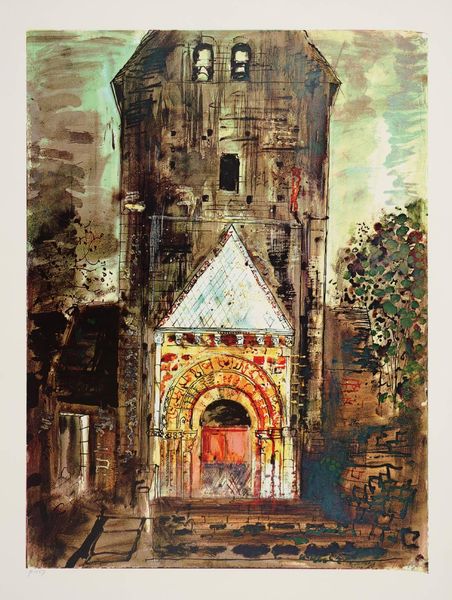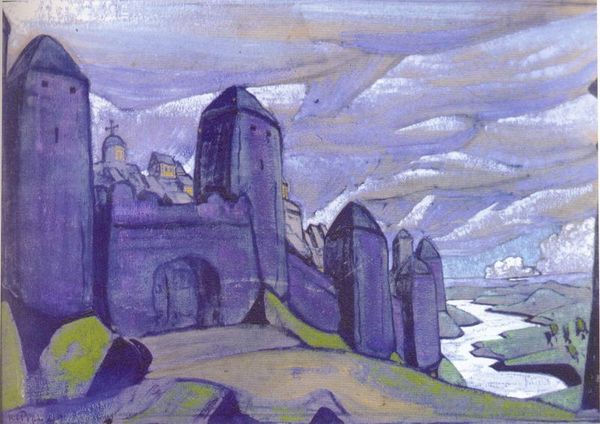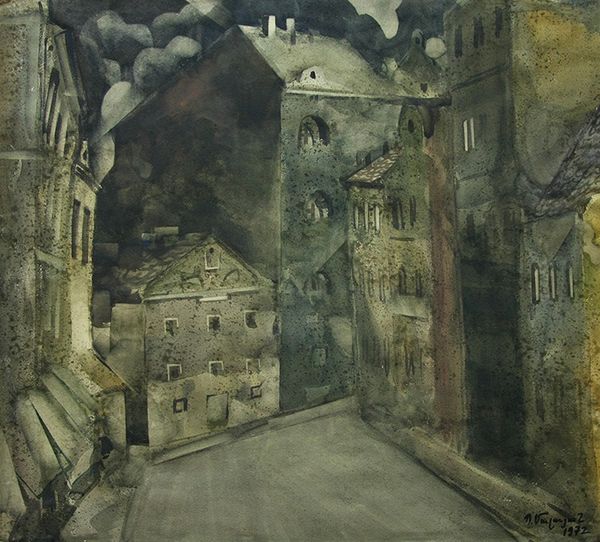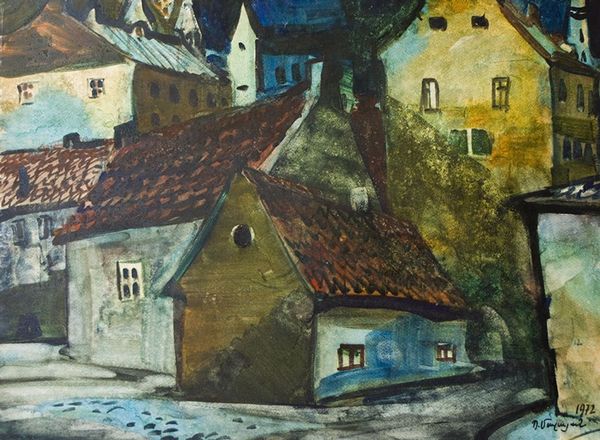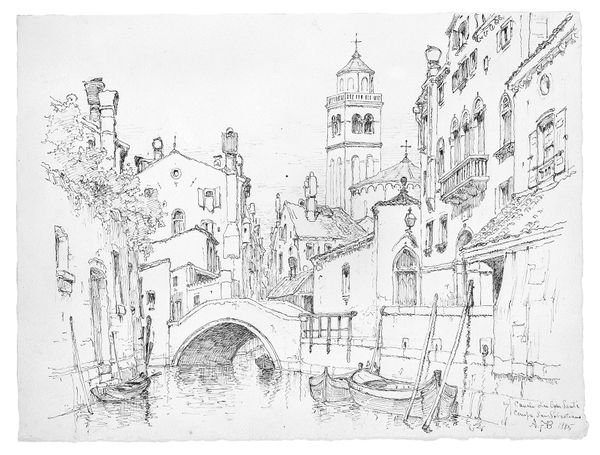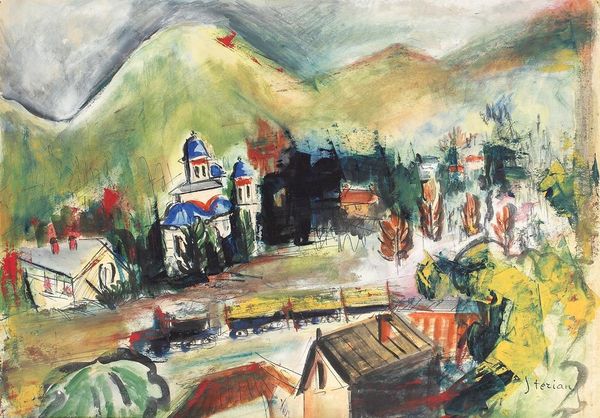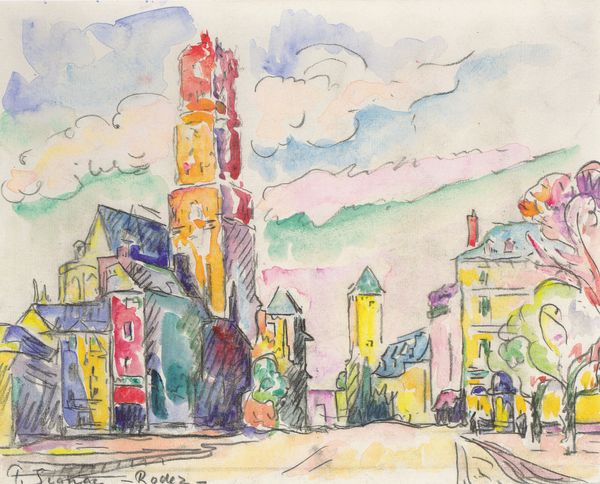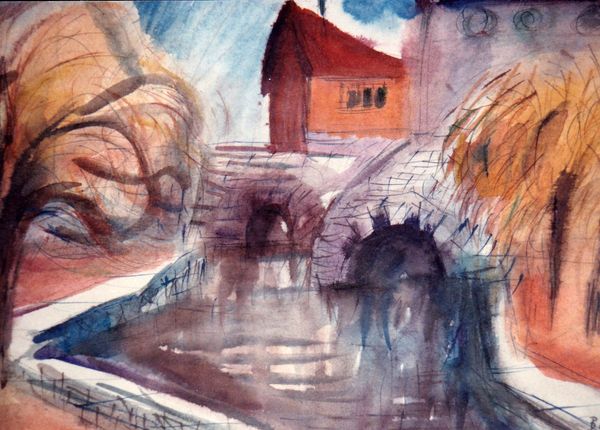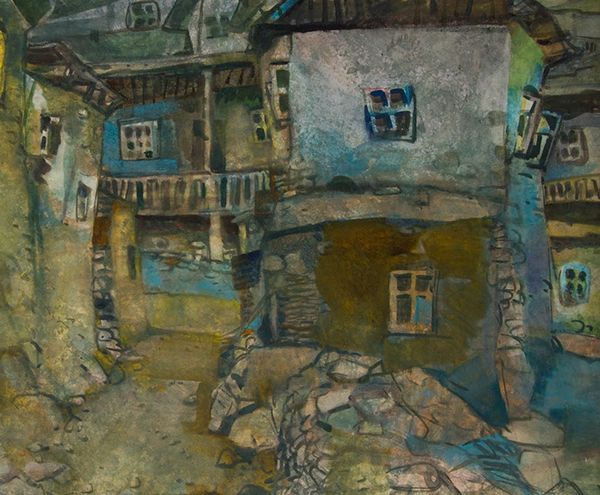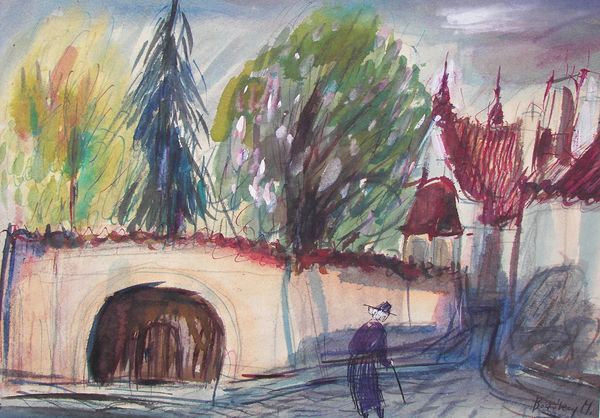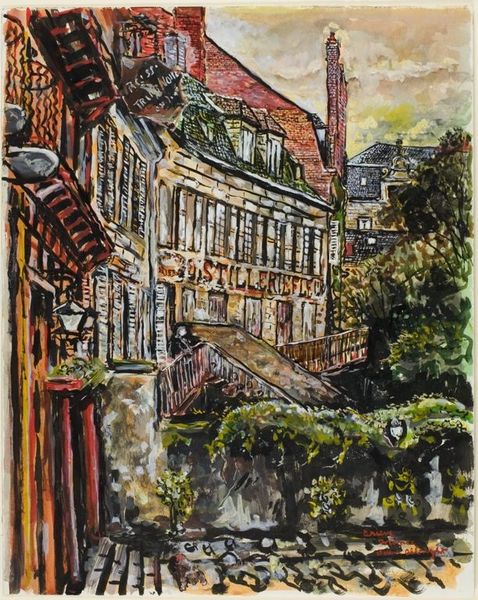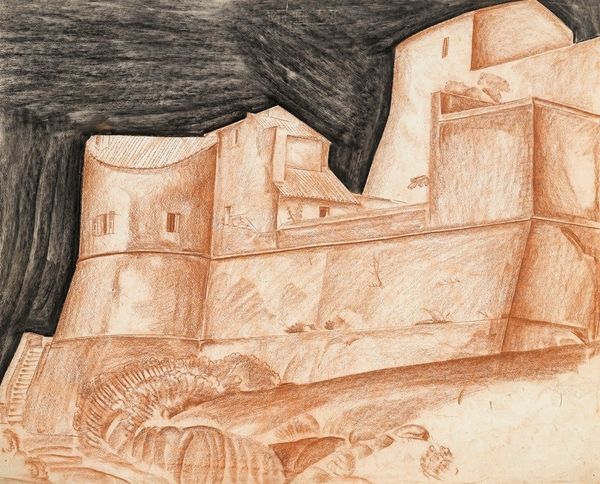
painting, watercolor
#
painting
#
landscape
#
watercolor
#
coloured pencil
#
folk-art
#
naïve-art
#
naive art
#
cityscape
#
watercolor
Copyright: David Burliuk,Fair Use
Curator: David Burliuk's "English Castle," created in 1946, offers us a vibrant cityscape rendered in watercolor, and, intriguingly, coloured pencil. Editor: My first impression is whimsical. It's naive in style, yes, but there’s also something delightfully unsettling about the perspective and the rather gloomy sky looming above. Curator: Gloomy, yet brimming with life, wouldn't you say? Consider the period, just after World War II. There's a resilience here, a deliberate choice of fairytale aesthetics, maybe even resistance. The "English Castle," after all, might be a composite, a reimagining rather than a realistic depiction. What is England, what does it signify in a Post-War world order? Editor: Perhaps, but I also see an emphasis on materiality. Look at the rendering of the stone—it’s chunky and tactile. It speaks of labour, of the sheer effort of construction. And watercolor itself—the way Burliuk layers it gives depth, despite the seemingly simple application. The colour saturation indicates he applied very little water which gives a textural result. Curator: Absolutely, and I see that texture reflecting social constructs and history. How labor and national identity are literally built together. A more traditionalist vision for postwar art. Editor: Let's not forget the materials. The coloured pencils bring an interesting line quality, a starkness that contrasts with the watercolour washes. The availability, cost, and symbolic meanings embedded within the materials – who had access to create work, for instance – forms a significant part of the artistic process, it adds a distinct layer. Curator: The castle dominates, imposing its patriarchal weight on everything! It's hard not to see its role in oppressive power dynamics and patriarchal structures in a conventional European style; the commoners traversing the bridge seem to carry a certain dejected appearance. This feels like Burliuk trying to unpack the concept of "Englishness" through an archetypal form. Editor: Perhaps the real significance is in his deliberate choices, those material processes employed at every level to question high and low art. The bridge appears as the transition of styles, methods and people between them. Curator: Thank you, it gives food for thought about tradition and representation in this time period. Editor: Indeed. It helps unpack the tangible aspect of what goes into producing art and art’s power, the consumption of art itself.
Comments
No comments
Be the first to comment and join the conversation on the ultimate creative platform.
